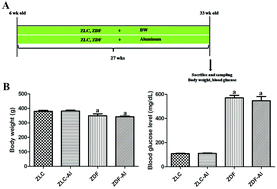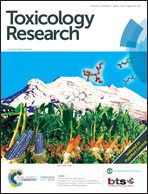Effects of long-term exposure to aluminum in the hippocampus in the type 2 diabetes model rats
Abstract
We investigated the long-term effects of aluminum (Al) exposure in the hippocampus in Zucker diabetic fatty (ZDF) rats and Zucker lean control (ZLC) rats. Six-week-old ZLC and ZDF rats were randomly divided into Al- and non-Al-groups. They were sacrificed 27 weeks after Al exposure (2000 ppm) through drinking water. Al exposure did not affect physiological parameters such as the body weight and blood glucose levels, but the prolonged diabetic condition had significant effects on the body weight and blood glucose levels. To determine the effects of diabetes and Al exposure on the neural plasticity and inflammatory response in the hippocampus, we examined the levels of doublecortin (DCX), N-methyl-D-aspartate receptors (NMDAR1, NMDAR2A, and NMDAR2B), and ionized calcium-binding adapter molecule 1 (Iba-1) in the hippocampus. DCX immunohistochemical staining revealed that Al exposure significantly reduced neuronal differentiation in both ZLC and ZDF rats. In particular, ZDF rats showed significantly decreased DCX immunoreactive neuroblasts compared with ZLC rats after aluminum exposure. In contrast, the expression of postsynaptic NMDARs was altered only in ZDF–Al rats; the protein expression level of NMDAR1 was reduced, but that of NMDAR2B increased in the hippocampus. Iba-1-immunoreactive microglia with morphological changes, including increased cytoplasm and retracted processes, were detected in the long-term diabetic condition and in the case of the co-existence of diabetes and Al exposure. Al exposure aggravated the diabetes-induced reduction of neuroblast differentiation and NMDAR signaling and facilitated the morphological changes associated with inflammatory activation in microglia in the hippocampus. However, further studies are still needed to confirm these findings.



 Please wait while we load your content...
Please wait while we load your content...